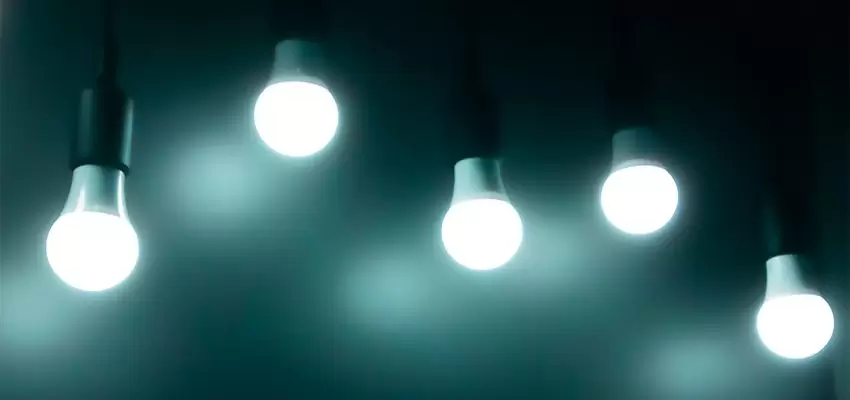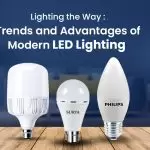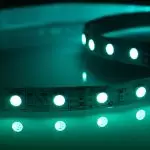Since LED lighting is long-lasting, energy-efficient, and environmentally friendly, it is becoming more and more common in both homes and businesses. With so many LED options accessible today, it’s critical to comprehend vital considerations when buying LED fixtures and bulbs to make sure you get the best lighting option for your requirements and price range. Here is a thorough list of things to consider when purchasing LED lights:
Post your Requirement
| Term | Definition |
| LED Lights |
LED (Light Emitting Diode) lights are lighting fixtures that use light-emitting diodes as a source of illumination. They are energy-efficient, long-lasting, and available in various colors and brightness levels, suitable for both residential and commercial applications. |
| LED Lights Online |
Refers to the availability of LED lights for purchase through online platforms or e-commerce websites, offering convenience, a wide selection of styles, types, and brands, as well as the flexibility to compare prices and read customer reviews before making a purchase. |
| Buy LED Lights |
The action of purchasing LED lights either from physical stores or online platforms, considering factors such as the desired brightness, color temperature, energy efficiency, warranty, and compatibility with existing fixtures or lighting systems. |
| LED Lights Price |
The cost associated with purchasing LED lights, can vary depending on factors such as brand, type, brightness, color temperature, features (e.g., dimmability, smart capabilities), and the retailer’s pricing strategy. |
| Types of LED Lights |
Different categories or variations of LED lights, which include options such as LED bulbs, LED tubes, LED strips, LED panels, LED spotlights, LED floodlights, and specialty LEDs designed for specific applications like grow lights or automotive lighting. |
When purchasing LED lights, it’s crucial to consider factors such as brightness, color temperature, energy efficiency, compatibility, warranty, and cost. Ensuring these aspects align with your needs guarantees optimal performance and satisfaction with your lighting investment. This table provides a comprehensive overview of the key factors to consider when purchasing LED lights, along with detailed explanations for each aspect.
| Factor | Description |
| Light Output |
Consider the required brightness level measured in lumens (lm) for each space. Determine the total lumens needed across all bulbs in a fixture or room. Bedrooms may need 600-800 lm, while task-oriented spaces like offices require 1200-1500 lm. |
| Light Color |
Choose the desired light color or temperature, ranging from warm white (2700-3000K) to daylight (5000-6500K). Lower Kelvin ratings emit a cozy glow, while higher temperatures offer a crisp, energizing light. Blend different color temperatures for a balanced ambiance. |
| Beam Angle |
Select the appropriate beam angle to match lighting needs – narrow for directional spotlighting, wide for ambient illumination. Mix and match beam styles for accent, task, and general lighting purposes. |
| Size and Base |
Ensure the LED bulb’s physical dimensions and connector base are compatible with existing fixtures. LEDs are available in various shapes and sizes for different applications, including A-shape bulbs, flood tubes, and recessed can lights. Verify socket compatibility before purchase. |
| Smart Options |
Explore smart LED options with wireless connectivity for advanced controls such as voice activation, scheduling, dimming, and automation. Smart LEDs enhance home lighting experiences with convenience and flexibility. |
| Energy Efficiency |
Enjoy significant energy savings with LED lights, typically using 80% less electricity compared to incandescent bulbs. Compare wattages and seek ENERGY STAR-rated LEDs for maximum efficiency. Calculate potential energy savings over time to assess long-term benefits. |
| Cost Over Time |
Although LED bulbs may have higher upfront costs, they offer long-term savings due to minimal energy consumption and extended lifespan (25,000+ hours). Evaluate overall value considering reduced energy bills and fewer bulb replacements over time. |
| Quality and Reliability |
Prioritize LEDs from reputable brands with reliable warranties (3-5 years) and certifications from respected testing labs (UL, ETL, DLC). Choose quality-assured products for dependable performance and longevity, avoiding generic or uncertified options with uncertain reliability. |
Let’s consider each factor separately :
1. Light Output:
Foremost, consider the brightness level or lumens needed. LEDs come in a wide range of light output options from dim accent lighting to ultra-bright spotlights. Determine the lighting intensity needed for each room before buying. Bedrooms may only require 600-800 lumens while home office tasks need 1200-1500 lumens. Add up overall lumens across all the LED bulbs for fixtures being installed in a space.
2. Light Color:
The light color or temperature sets the mood and ambiance produced. LEDs range from warm white (2700-3000K) to bright white (3500-4100K) to daylight (5000-6500K). Lower Kelvin ratings emit a soothing golden glow while higher temperatures appear crisp, clean, and energizing. Blend different color temperatures to balance contrasting spaces.
3. Beam Angle:
The beam angle influences the light distribution pattern. Narrow spotlights focus intense directional illumination while wide floodlights cast softer, dispersed ambient lighting. Match beam style to specific lighting purposes to optimize the usefulness of the glow. Mix and match for accent, task, and general lighting as needed.
4. Size and Base:
Consider the physical bulb shape, dimensions, and connector base compatibility with existing fixtures. LEDs come as retrofit replacements for traditional A-shape bulbs, slender flood tubes, recessed ceiling can lights, and more. Verify bases fit socket types before purchase.
5. Smart Options:
Many LED bulbs and fixtures now integrate wireless connectivity and smart technology for voice/app controls, scheduling, dimming, and automated triggers based on behaviors and ambient light readings. Incorporate smart LEDs to enable next-level home illumination experiences.
6. Energy Efficiency:
A key LED benefit is cutting electricity costs by 80% or more versus incandescent bulbs. Compare wattages of LED replacements and calculate potential energy savings over older bulb types. Seek ENERGY STAR-rated LEDs meeting federal efficiency standards for maximum savings.
7. Cost Over Time:
Upfront LED prices are dropping dramatically. Though initial bulb costs may exceed incandescent, LEDs pay for themselves within months thanks to minimal energy use and extreme longevity (25,000+ hours). Evaluate overall value based on fewer lifetime bulb replacements.
8. Quality and Reliability:
See that LED packaging displays respected testing lab logos (UL, ETL, DLC) and maker warranties of at least 3-5 years. Favor major known brands offering quality assurance versus generic no-name vendors with uncertain product reliability.
Visit: The Only Guide You Should Read Before Buying LED Lights!
With these LED considerations in mind, you can shop smarter and furnish your home with brilliant, energy-saving LED lights tailored to all your interior and exterior illumination needs. By prioritizing factors like brightness, energy efficiency, and compatibility, you can make informed choices when shopping for LED lights. This approach ensures you’ll find the perfect lighting solutions to enhance both your indoor and outdoor spaces with brilliance and energy-saving benefits.























Post A Comment